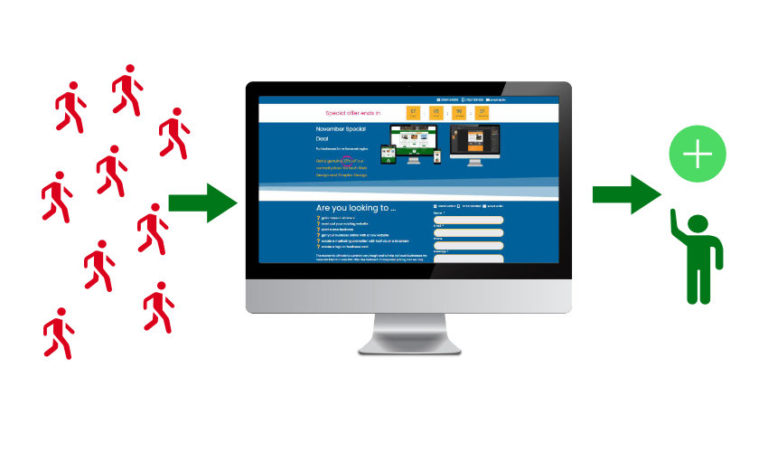Website conversion refers to the process of converting website visitors into customers. A conversion happens when a visitor takes the action specified on a webpage. This can take many forms, for example, filling out a contact form, signing up for a newsletter, downloading a free resource, or purchasing a product.
Improving website conversion rates involves optimising various elements of the website, such as the layout, design, content, and calls-to-action. By making it easy for visitors to take the desired action, businesses can increase their conversion rates and ultimately grow their business.
A lot of businesses focus on creating a website that looks good, and whilst that is important it does miss a key point. The primary purpose of a business website is to attract more visitors and for those visitors to become customers to then drive business growth. This part of the web design process is often overlooked, but without this key functionality, you’ll be missing out on a significant opportunity for business growth and profitability. It is therefore vital to focus on website conversion as a critical component of your online strategy.
Here are 6 key considerations to maximise website conversion:
- User friendly
The user experience should be designed to make it easy and intuitive for the user to take the desired action. The website should be easy to navigate, load quickly, and provide clear and concise information that helps the user make an informed decision. Usability problems will ‘kill’ conversions. The visible portion of your website (without scrolling) should clearly answer such things as
- who is this website for?
- what does your business do?
- what do you want a visitor to do?
A full description of user friendly web design is covered in this recent article ‘15 main factors that ensure a website is user-friendly‘.
- Call-to-Action (CTA)
A clear and prominent CTA is essential for website conversion. It should be positioned in a prominent location, preferably in the top right of the website. Use compelling and attention-grabbing language, and make it clear what the user will get in return for taking the desired action. It can be particularly effective when it is linked to a Landing Page (see next section)
- Landing Pages
A landing page is a standalone page on a website with a specific marketing aim of converting a visitor into a future customer. As a result, they provide a far easier way to generate leads for a business. They should be focused on a single action, use persuasive language and imagery, and provide clear and compelling benefits of taking the desired action, such as giving something away in return for contact details. A full description of what makes a good landing page is covered in this recent article.
- Testing and tracking
A/B testing involves creating multiple versions of a website or landing page and testing which version performs better. It is an effective way to identify which elements of the website or landing page are driving conversions and make improvements accordingly. The use of Analytics software will greatly help to track website conversions by identifying which pages or actions are driving the most conversions.
- Trust and Credibility
Trust and credibility are crucial for website conversions because they are the foundation of any successful online relationship. When potential customers visit a website, they want to be sure that the website is trustworthy and credible before they take any action, such as making a purchase, filling out a form, or subscribing to a newsletter. This can be achieved through the use of social proof, with such things as testimonials and reviews.
- Web performance
Visitors expect a fast and seamless user experience when they visit a website. If a website takes too long to load, visitors are likely to abandon it and move on to a competitor’s website. Slow loading times and poor performance can negatively impact user experience and lead to lower conversion rates. It should be optimised for mobile devices, as more people are accessing websites on their phones than ever before.
If you would like to find out how we can help you gain more customers through your website, please get in touch for a free consultation.


